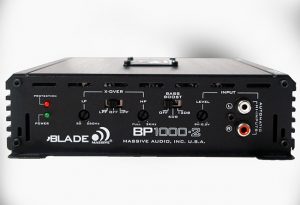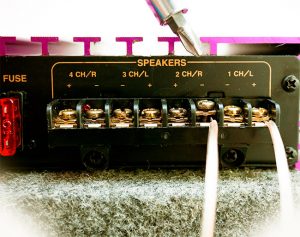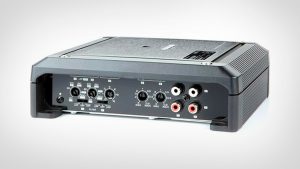Unless you’ve got a set of $1000+ speakers, I bet you’re not very happy with the audio output – the volume and the sound quality. Well, that’s where amplifiers come in. Specifically designed to “beef up” a set of regular speakers, they do an excellent job of increasing the power level, allowing you to enjoy music to the fullest. Now, at their core, amps are roughly the same.
But, there are still some factors to consider. Mainly, how many channels do you need? Do you want a device with four channels, or maybe you’ll be better off with two? For a novice, this question will be tough to answer. That’s why I wrote this guide. To help you figure out the 2 channel vs. 4 channel amp dilemma and make an educated choice!
Table of Contents
A Quick Look at Amplifiers: Why They Matter

That won’t be an issue with an amp, though. It will make the music significantly louder and you won’t hear any imperfections like distortion. Statistically, most drivers think about buying a third-party amp after they upgrade the sound system. That’s because stock radios/receivers aren’t built to handle premium speakers. So, without a proper amp, you won’t be able to “squeeze all the juices” from the new speakers. The same is true for subwoofers.
So, Two Channels, or Four?

Thus, if you only care about the front pair of speakers and don’t even switch on the rear set, a 2-channel amp will be right up your alley. In contrast, if you’re a fan of the surround sound and want to hear music from all four speakers, go with a 4-channel amp.
Different Configuration, Different Demands
And what if you have a standard two-power system and want to add a subwoofer? Well, there are plenty of 3-channel amps that can easily feed all three outputs. A four-channel amplifier will work as well by bridging two channels into one to power the sub. Subwoofer-only amps are also available. They’re usually mono and cost a lot, but the sound quality is amazing.
A quick note: if you mostly listen to music by yourself, a two-channel amp is a safe bet. But, if you do a lot of camping and want the speakers to be really loud, a four-set amp + speaker configuration will be more preferable. Folks with thick wallets will probably like the 5-channel amps (four for the speakers, and one for the woofer).
How Much Power is enough?
When it comes to audio equipment, the power output slash loudness is measured in watts. For starters, 50 watts RMS per channel is a good enough level. The speakers should also be +/- 50 RMS, by the way. Moving up to the next category, we’ve got 75-watt amps. As you can imagine, these will be 50% louder. Finally, with 100-watt amp channels, you’ll get twice as much volume.

Can you make a Two-Channel Amp Power Four Speakers?
Yes, you can do that. But, this requires lots of skills, patience, and luck. The first thing that you’ll need to get right is the impedance. Secondly, make sure to divide the power of each channel evenly between two speakers. If you get the impedance levels wrong, that might potentially ruin both the amp and the speakers. Go ahead and learn the max/min impedance of the amp – check the manual for that. Next, calculate the speaker impedance.
If the total impedance of the two speakers is within the limits of ONE of the amp channels, use the series circuit technique. And if that’s not an option, parallel is your only choice. This isn’t a walk in the park, though. Only consider it if you know you can pull this off. And remember: even if you do this successfully, you won’t have the option of balancing the speakers separately. And, the overall volume will be lower than with a four-channel amp.



Leave a Reply